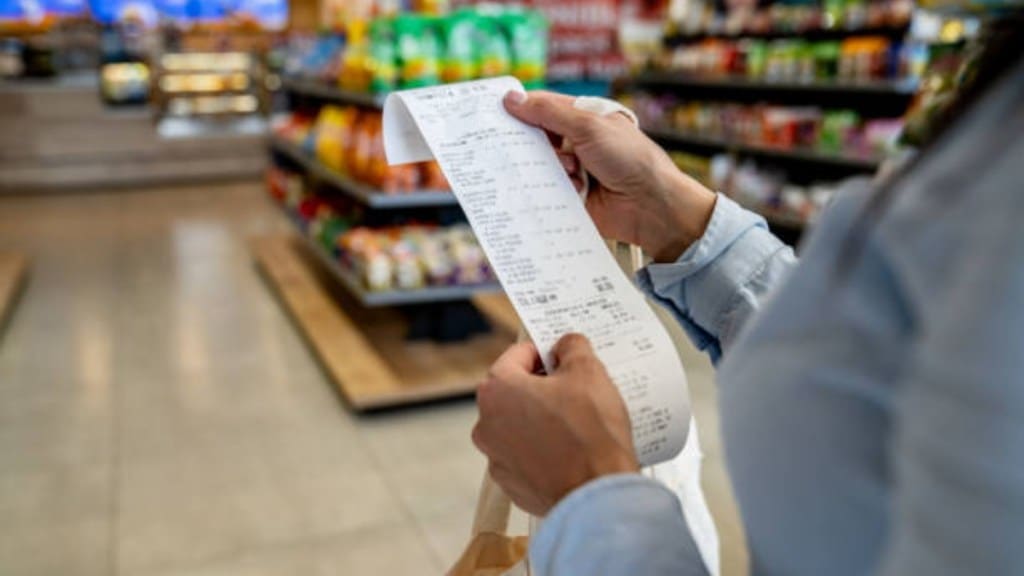India’s retail inflation, based on the Consumer Price Index (CPI), eased to a four-month low of 5.22% in December, mainly on the back of decline in prices of vegetables and pulses, official data released on Monday showed. However, a sharp fall in the exchange value of rupee, and a recent rise in prices of crude oil, have cast clouds over expectations of a rate cut by the Reserve Bank of India in February.
Factoring in the December reading, CPI inflation in Q3FY25 averaged 5.6%, 10 basis points (bps) lower than the Reserve Bank of India’s (RBI) estimate for the quarter.
For the full year FY25, however, economists expect retail inflation to average 4.6%, in line with the RBI’s forecast, as inflation could be higher in the near term due to “sudden increase” in oil prices and rise in imported inflationary pressures due to constant depreciation of the rupee.
“While the RBI’s projection for inflation for Q4 is 4.5%, the present depreciation in the rupee will be an additional concern as this can lead to higher imported inflation especially on oil products,” said Madan Sabnavis, chief economist, Bank of Baroda.
The rupee closed at 86.58 a dollar on Monday, down 0.71% from its previous close of 85.97 a dollar. In the past three months, the rupee has depreciated against the dollar by 2.9%, in the backdrop of strengthening of the US currency.
Also, Brent crude price crossed $81-per-barrel mark on Monday due to expectations that expanded US sanctions on Russian oil producers would disrupt crude supplies to major importers, such as India and China.
“It does look like that there could be a status quo on repo rate under these conditions (unless things change drastically on the forex front which is unlikely),” added Sabnavis.
Analysts have been calling for a rate cut in the February meeting of the central bank’s Monetary Policy Committee (MPC) as growth this year has been much lower than expected. In Q2FY24, GDP growth came in at a seven quarter low of 5.4%.
The finance ministry in its recent monthly economic review report had criticised the RBI’s monetary policy actions, saying that “combination of monetary policy stance and macroprudential measures by the central bank may have contributed to the demand slowdown” in the economy.
Meanwhile, in December, food inflation dropped to a three-month low of 8.39% from 9.04% in November. Vegetables inflation edged down to 26.56% from 29.33%, and pulses inflation fell to 3.83% from 5.41%. Cereals inflation too declined to 6.51% in December from 6.88% a month back.
Core inflation, on the other hand, remained subdued at 3.6%. For 13 consecutive months, core inflation has stayed below the 4% mark. But going forward, it’s expected to pick up as price hikes by manufacturing and services companies, and low-base effects will exert upward pressure, said analysts.
“Vegetable inflation has been a significant contributor to overall CPI inflation in recent months, averaging around 36% since September. Just by excluding vegetables, CPI inflation (in December) stood at 3.9%, below the RBI’s target of 4%,” noted Rajani Sinha, chief economist, CareEdge Ratings.
The outlook for agriculture remains positive, with robust Kharif output prospects. Rabi sowing trends also remain conducive with healthy reservoir levels. As a result, inflationary pressures within the food basket should continue to ease going forward, said economists.
Moreover, subdued global commodity prices amid concerns over global demand should further support the moderation of headline inflation going forward, noted Sinha. In December, the Bloomberg commodity price index declined by 1% on year, and Brent crude prices fell by 5.4%.
“Softening inflation and growth trajectory provides room for the onset of rate cutting cycle in the upcoming February policy. However, we remain cautious on the global headwinds,” said Upasna Bhardwaj, chief economist, Kotak Mahindra Bank.
Manoranjan Sharma, chief economist at Infomerics Ratings said: “Given the macroeconomic scenario of decelerating GDP growth and inflation coming under some control, it stands to reason that a 25 basis points rate cut to 6.25 % by the RBI is on the cards in February.”


